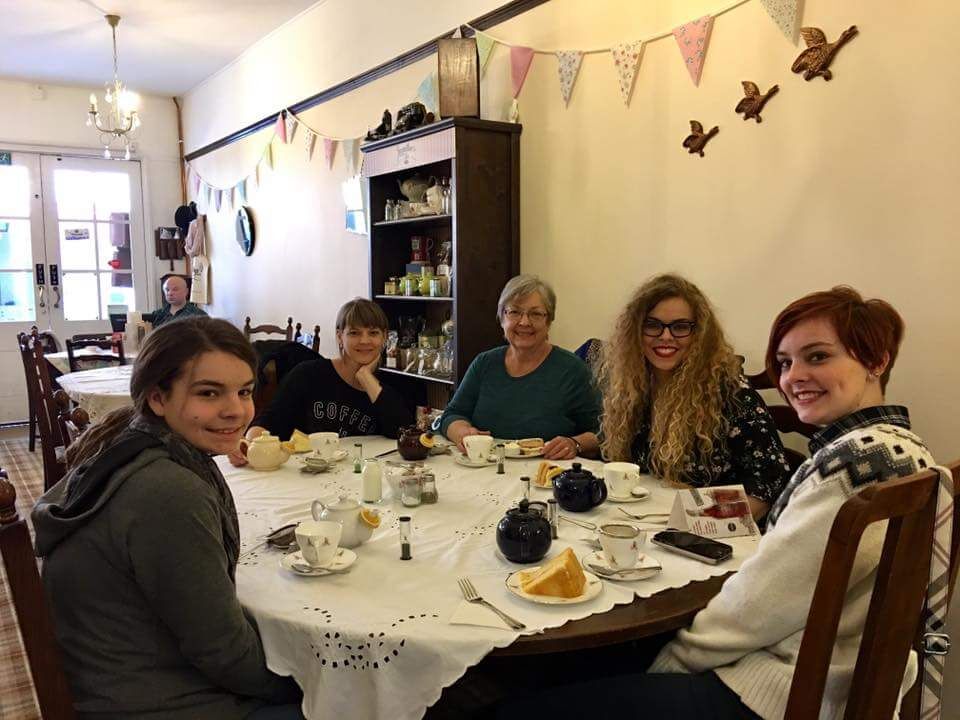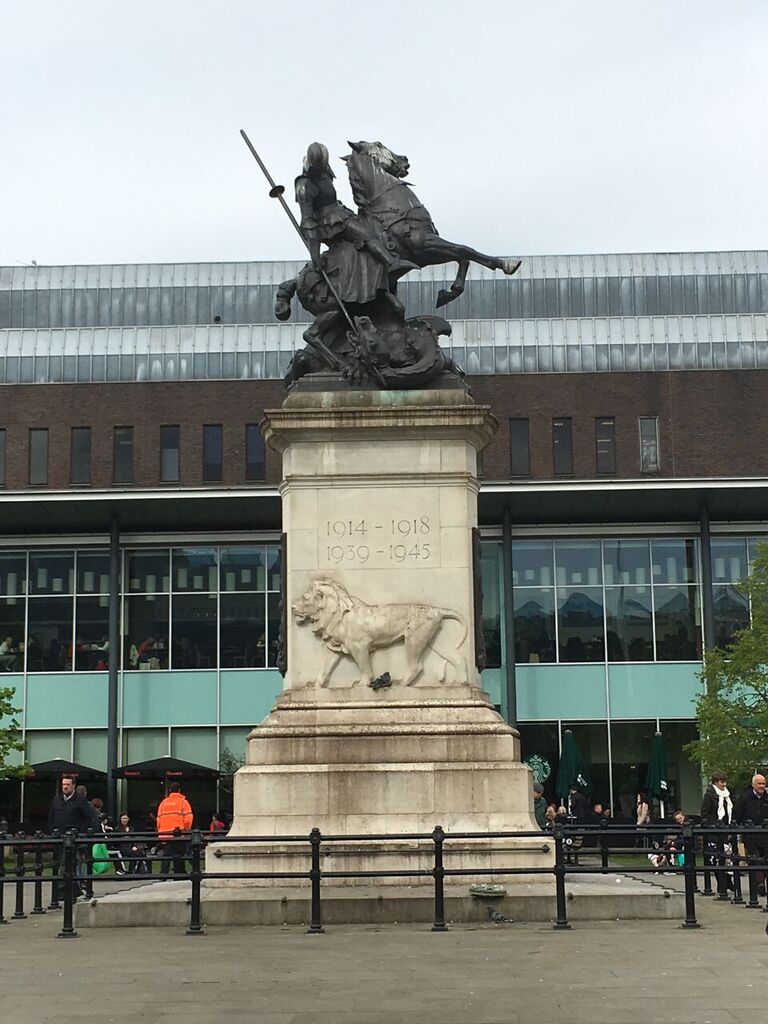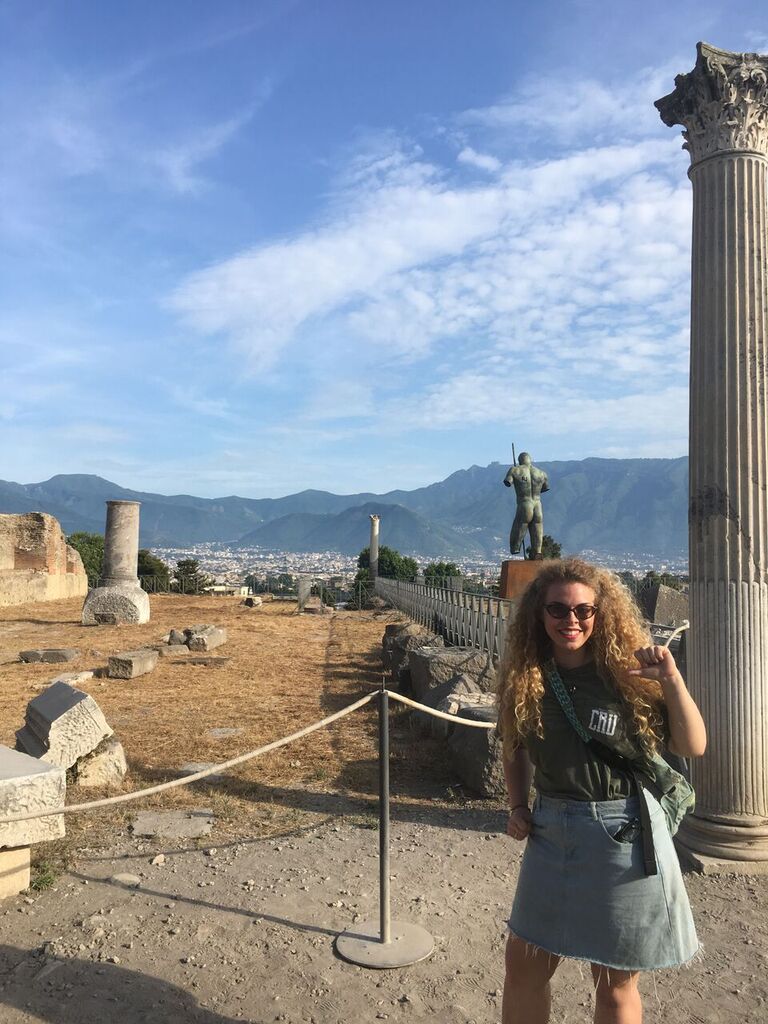Senior English major Anne Crafton spent the 2017 spring semester in England, where her studies and an interest in the Classics had her following the footsteps of J.R.R. Tolkien as she conducted research at Oxford; protesting for cultural and religious equality in London; visiting Roman ruins in Manchester; and of course taking time out to enjoy a spot of tea with her family. Learn more about her trip in the pictures below.

My first trip (of many!) to London, standing in front of Parliament, Big Ben, and the London Eye in January, 2017. This was to be the scene of a terrorist attack only a few months later. I visited several locations around Britain that would later see tragedies. However, the British people really do “Keep Calm and Carry On,” and London, Manchester, etc, has stayed strong and united.

Taken in Oxford at the Eagle and Child Pub. I took a brief trip to Oxford for research purposes; Tolkien’s works on Beowulf and his research on Dragons constitute a large percentage of my undergraduate research. After visiting the libraries and museums, I was able to take a break and visit the iconic pub where the Inklings met for decades to discuss literature, poetry, and criticism.

At the Say No to Racism march in London, March 18th 2017. Although the city was attacked only a week later, London has refused to give in to fear and hatred. The main campaign behind the march was to end the stigma against Islam, which has thousands of followers in London alone. The highly diverse city is home to immigrants, multi-ethnic people groups, and refugees. Despite the counter-protests by alt-right groups throughout the city, the march was incredibly successful and gained international acclaim. I was excited to be a part of it.

When my family visited near the end of March, I took them around Colchester and London throughout the course of a week. This photo shows us in a 1940s-themed tea shop in Colchester. The practice of daily tea is something I grew accustomed to in my time in England; it’s a time for socialization and relaxation in the midst of a hectic day.

Taken in Manchester, March 28th. This thriving city is host to multiple cultures, dating all the way back to the Romans. These are reconstructed Roman ruins of a fort that once lay in the middle of the city. While I was in Manchester I had the opportunity to visit the library where Karl Marx penned The Communist Manifesto, and I held a first edition copy of Samuel Johnson’s Dictionary! Months later, the terrorist attack at a children’s concert left the city shaken but not broken. To this day they are united and refuse to give in to fear and hatred.

In Hexham, Northumberland, there is a museum and abbey called Bede’s World that is dedicated to education about Anglo-Saxon England. I was able to visit and discuss my research with the full-time Anglo-Saxon re-enactors on site. The actors spend their time fully engaged in Anglo-Saxon life and are mostly made up of professors on research leave. The lady I spoke to, Lucy, was extremely well educated on the period’s textiles and mythologies.

A statue of St. George and his Dragon in Newcastle, taken April 17th. St. George is the patron saint of England and takes a central place in many of their iconographic pieces in churches and public spaces. His saint’s day is considered a national holiday in which the country celebrates traditionally English practices and stories. St. George will be a part of my research, as he is the peak of Hagiography dealing with dragons in the Middle Ages.

Marilyn Diptych by Andy Warhol in the Tate Modern Museum in London. My first two years at the University of Arkansas were occupied with H2P, the Honors Humanities Program. We were able to study this piece at length in the final semester. It was extremely gratifying to be able to see it in person and explain its significance to my companions.

Jenny Hebron and I on top of the Simonside Hills in Northumberland. Jenny is a friend of my grandparents back in Arkansas but we were able to connect several times during my time here. The daughter of Indian Immigrants, single mother, and government employee, Jenny is a hardworking example of both the long-term effects of British imperialism and immigration. Although she’s a typical middle-aged British woman, her parents had to fight for their place in a country that wasn’t willing to budge. Thankfully, her parents and in-laws were strong-willed people and she stands today as a tribute to their dedication.

In Pompeii, Italy, May 5th. Having studied the Classics for nearly 14 years, I knew it would be necessary to take a trip to Rome and Pompeii to visit the sites of my studies. Having attended countless lectures about Pompeii, I made it a priority. Despite the heat, it lived up to the hype my professors had claimed. I saw the graffiti I had learned about in a guest lecture, visited fully standing Roman households, and walked in the actual streets that Dr. Frederick has so vigorously recreated in the Digital Pompeii Database.
